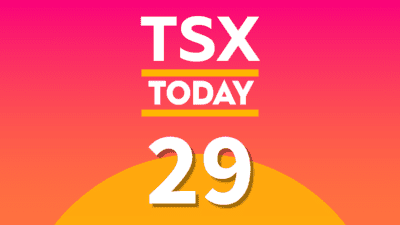Loblaw Companies Limited (TSX:L) and Metro Inc. (TSX:MRU) are two of Canada’s largest owners and operators of grocery stores and pharmacies, and both of their stocks represent attractive long-term investment opportunities after the recent decline in the market. However, the laws of diversification state that we cannot buy both, so let’s take a closer look at each companies’ most recent quarterly report, their stocks’ valuations, and their dividends to determine which is the better buy today.
Loblaw Companies Limited
Loblaw’s stock has risen over 13.5% year-to-date, including an increase of over 4.5% since it released its second-quarter earnings results on the morning of July 23. Here’s a summary of eight of the most notable statistics from the report compared with the same period a year ago:
- Adjusted net income increased 17.8% to $350 million
- Adjusted earnings per share increased 14.9% to $0.85
- Revenue increased 2.2% to $10.54 billion
- Excluding certain items, food retail same-store sales increased 4.2% and drug retail same-store sales increased 3.8%
- Adjusted earnings before interest, taxes, depreciation, and amortization increased 7.9% to $857 million
- Adjusted operating income increased 14.4% to $612 million
- Cash flows from operating activities decreased 3% to $930 million
- Weighted average number of diluted shares outstanding increased 3.4% to 416.7 million
At today’s levels, Loblaw’s stock trades at 20.1 times fiscal 2015’s estimated earnings per share of $3.52 and 17.3 times fiscal 2016’s estimated earnings per share of $4.10, both of which are inexpensive compared with the industry average price-to-earnings multiple of 22.7.
In addition, Loblaw pays a quarterly dividend of $0.25 per share, or $1.00 per share annually, which gives its stock a 1.4% yield at current levels. Investors should also note that the company has increased its dividend for four consecutive years.
Metro Inc.
Metro’s stock has risen about 14.5% year-to-date, including a decline of about 2.5% since it released its third-quarter earnings results on the morning of August 12. Here’s a summary of eight of the most notable statistics from the report compared with the same period a year ago:
- Net income increased 13.1% to $163.5 million
- Earnings per share increased 18.5% to $0.64
- Revenue increased 6.1% to $3.84 billion
- Same-store sales increased 4.3%
- Operating income before depreciation, amortization, and associate’s earnings increased 9.6% to $277.6 million
- Earnings before income taxes increased 13.1% to $163.5 million
- Cash flow from operating activities increased 8.5% to $201.9 million
- Weighted average number of diluted shares outstanding decreased 4% to 250.1 million
At current levels, Metro’s stock trades at 17.5 times fiscal 2015’s estimated earnings per share of $2.03 and 15.9 times fiscal 2016’s estimated earnings per share of $2.24, both of which are inexpensive compared with the industry average price-to-earnings multiple of 22.7.
In addition, Metro pays a quarterly dividend of $0.117 per share, or $0.468 per share annually, which gives its stock a 1.3% yield at today’s levels. It is also very important to note that the company has increased its dividend for 21 consecutive years.
Which retailer represents the better buy today?
After directly comparing Loblaw and Metro, I think Metro represents the better long-term investment opportunity today. Both companies released very strong earnings results in their most recent quarter, but Metro’s stock trades at more attractive forward valuations and it has a much longer streak of annual dividend increases, giving it the edge in this match-up. Foolish investors should strongly consider establishing positions today.








